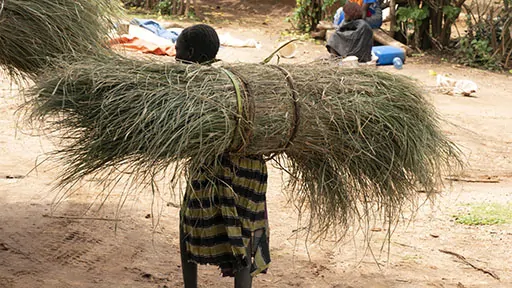Opinion Editorial Archive August, 2020: Damed If You Do

The Old Testament account of the Great Flood may be based to some degree on an actual flood. But we need not speculate about that. There are many well-documented accounts of historical floods that had tremendous impact. We need not be surprised: only last month, as the rainy and monsoon seasons lashed parts of Asia, ongoing floods and subsequent landslides caused billions of dollars of damage, killed thousands and displaced millions of people. If a modern-day Noah is to save the one-horned rhinoceros, he'll need to arrive soon, as the unusually heavy rains are set to continue.
Last month, Ethiopia confirmed that its seasonal rains had achieved the first-year filling target of the reservoir behind its Grand Ethiopian Renaissance Dam on the Blue Nile River. Africa's largest hydroelectric project, it has been almost a decade in construction. A few days earlier, China confirmed it had deliberately destroyed a dam on the Chuhe River. Clearly, something is wrong with this picture.
In the Ethiopian case, the dam is one of many national infrastructure projects undertaken in recent years in the name of economic development. Electricity has long been undersupplied in that country and the dam will add significant capacity beginning in the next few months. In the Chinese case, the destruction was one of many drastic measures undertaken to help alleviate some of the worst floods in a generation. In both cases, the problem is our growing need to control water.
One problem, two solutions.
Downstream from Ethiopia's new dam lie Sudan and Egypt. Their governments have had a vital project of their own for the past decade: getting agreement from Ethiopia to release enough water that their people can survive. Their concerns are not unfounded. The Nile (and its two main tributaries the Blue Nile and White Nile) have irrigated natural vegetation and human agriculture, and sustained fish populations, in the region for the last few thousand years. While floods and droughts have happened, naturally, many times, we already know what happens in the case of extreme drought. Forty-two hundred years ago, a major drought in Egypt led to devastation on such a scale that a hundred-year civil war and the collapse of a kingdom ensued. Today, there is a much larger (human and livestock) population to feed than back then.
Sudan and Egypt didn't always rely on the Nile. Although this month's photo was taken in Ethiopia, it would have been a common picture in the region between 5,000 and 10,000 years ago — when most of the terrain was not desert but savannah. Instead, it was taken in the Lower Omo Valley at a marketplace that serves that area's indigenous people. There, we can see a second example of why Sudan and Egypt have justified concerns. Five years ago, Ethiopia's Omo River stopped flooding. Not because of climate change but because of that country's Gibe III dam. Another of Ethiopia's infrastructure projects, it has had a drastic downstream impact on indigenous people. (The article linked at the end of this op-ed goes into detail on this.)
Trilateral negotiations broke down again last month — although the three parties have agreed to restart them, announcing a "major common understanding," in the past few days. As this goes to press, the talks have not yet restarted and no actual agreements have been reached. It is difficult to get detailed information about any impact studies that have been undertaken — partly due to government-imposed restrictions on free speech. One thing is certain, though: The new dam has the potential to bring both harm and benefit to many including indigenous people. As the situation plays out over the next few years (it will take that long to fill the new dam to full capacity), it will be an interesting case study of international politics and diplomatic relations. Only last October, Ethiopia's Prime Minister, Abiy Ahmed, stated that he is prepared to go to war over the new dam if necessary. Ironically, he had won the Nobel Peace Prize only a few days earlier.
Less than a year later, the current floods in China could pose a threat to global supplies of personal protective equipment that help combat the coronavirus pandemic. The new reservoir in Ethiopia could eventually increase the price of the sheets we sleep on. Even something as simple as water shows how globally interconnected we all are.
Learn more about the loss of indigenous knowledge in the Omo Valley, Ethiopia.
If you enjoyed reading this month's opinion editorial, please consider supporting independent, advertising-free journalism by buying us a coffee to help us cover the cost of hosting our web site. Please click on the link or scan the QR code. Thanks!

